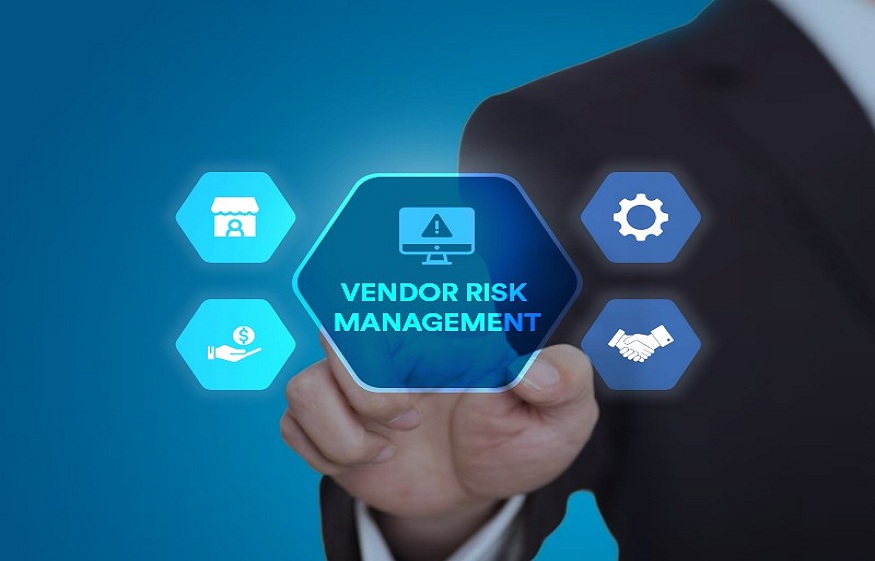
Revolutionizing Automated Risk Management: Tools and Techniques for Modern Vendor Oversight
admin
- 0
The complexity of managing third-party relationships has skyrocketed. Vendors no longer just provide services—they often have direct access to sensitive systems, customer data, and core business processes. This interdependency makes vendor risk management a board-level concern.
Yet, many organizations are still stuck using outdated, manual processes that can’t keep up with the pace and scale of modern business. Spreadsheets, static questionnaires, and siloed approvals create bottlenecks and expose companies to blind spots.
That’s why automated risk management has become essential. By combining automation, intelligent workflows, and continuous oversight, businesses can detect threats faster, improve compliance, and confidently scale their operations. This blog explores how modern tools and techniques are revolutionizing third-party risk oversight.
The Shift Toward Automation in Risk Management
Manual risk management is not only time-consuming—it’s dangerously reactive. Teams spend weeks collecting documentation, chasing stakeholders for approvals, and manually analyzing risk data. The result? Delayed decisions, inconsistent evaluations, and outdated vendor risk profiles.
Automation addresses these inefficiencies head-on. It introduces speed, accuracy, and repeatability to processes that were once bottlenecks. Whether it’s streamlining assessments or triggering alerts when risk levels change, automation frees up security and compliance teams to focus on what matters: making strategic decisions.
Key Components of Automated Vendor Oversight
1.Automated Vendor Risk Assessments
Automated risk management eliminates the guesswork by scoring vendors based on predefined rules and frameworks. Businesses can:
- Use tiered risk models that adjust based on vendor criticality
- Deploy pre-configured questionnaires aligned with regulations (e.g., SOC 2, HIPAA, ISO 27001)
- Automatically score and prioritize vendors for further review
These assessments ensure consistency across departments and reduce decision-making delays by providing clear, actionable insights early in the onboarding process.
2. Real-Time Document Collection and Validation
Collecting compliance documentation can take weeks—especially when it’s done manually. Automation simplifies this with:
- Scheduled reminders and auto-notifications for vendors
- Secure portals for document submission
- Auto-validation of key details (e.g., certificate expiration, missing fields)
A centralized repository ensures audit readiness and eliminates the risk of overlooking expired or missing documentation.
3. Workflow Automation and Smart Routing
When a high-risk vendor is flagged, the right stakeholders need to act fast. Automated workflows ensure:
- Smart routing of approvals and escalations based on vendor profile
- Task delegation across legal, procurement, security, and compliance
- Notifications and progress tracking to avoid bottlenecks
This collaborative, cross-functional process dramatically reduces cycle time and human error.
Continuous Monitoring and Threat Intelligence
While automation solves the inefficiencies of onboarding, continuous monitoring solves the visibility problem post-onboarding. Traditional TPRM programs often end after a vendor is approved—but risk doesn’t stop there.
Key changes that often go undetected without continuous monitoring include:
- Publicly reported security breaches or incidents
- Lapses in regulatory compliance or certification renewals
- Mergers, acquisitions, or major leadership changes
- Financial distress or negative media coverag
Continuous monitoring tools automatically track these signals across public and proprietary data sources. When a vendor’s risk posture changes, security teams are alerted in real-time—allowing them to respond proactively before the risk escalates into a business disruption.
Tools Powering Modern Risk Automation
Today’s automated TPRM systems are powered by a combination of advanced technologies:
- TPRM Platforms like Auditive integrate assessment workflows, document management, risk scoring, and monitoring in one place
- GRC Tools (Governance, Risk, and Compliance) embed automation into broader compliance and audit programs
- Threat Intelligence Feeds pull in real-time signals from the dark web, breach databases, news, and regulatory sources
- AI/ML Models learn from vendor behavior over time and predict risk trends based on historical patterns
This ecosystem enables a risk program that’s not just reactive but predictive—flagging potential issues before they become problems.
Business Benefits of Automated Risk Management
Automation isn’t just about reducing manual work. It drives strategic benefits that impact the bottom line:
- Faster Onboarding: Vendors move through risk assessments and approvals in days, not weeks
- Improved Audit Readiness: Clean, centralized documentation supports smoother audits and regulatory reviews
- Scalable Oversight: Teams can manage hundreds of vendors with limited headcount
- Stronger Compliance Posture: Stay ahead of evolving regulations with automated alerts and policy enforcemen
- Executive Confidence: Real-time dashboards and reports provide transparency to boards, regulators, and leadershi
Use Cases in FinTech, HealthTech, and EdTech
For sectors like FinTech, HealthTech, and EdTech, where sensitive data and strict regulations converge, automated risk oversight is more than a convenience—it’s a necessity.
- FinTech companies rely on vendors for payment processing, data analytics, and infrastructure. Automated oversight ensures PCI and SOC 2 compliance is maintained continuously.
- HealthTech organizations must protect patient data under HIPAA. Automation flags any certification lapses or access issues before they result in penalties.
- EdTech platforms handling student records and learning data benefit from real-time risk alerts to maintain FERPA compliance and institutional trust.
Building a Future-Ready Risk Program
To unlock the full benefits of automation, businesses need a structured, phased approach:
- Assess current processes and identify manual pain points
- Select the right TPRM platform with built-in automation and monitoring capabilities
- Integrate tools across security, legal, and procurement workflows
- Train stakeholders to interpret risk signals and take action
- Iterate and optimize based on vendor landscape and regulatory evolution
Cross-functional collaboration and executive sponsorship are key to long-term success.
Conclusion
As vendor ecosystems grow and compliance landscapes evolve, manual vendor risk management is no longer enough. Automation and continuous oversight are transforming how organizations detect, respond to, and mitigate risk—bringing security, speed, and scalability into alignment.
Platforms like Auditive help modern businesses stay ahead with integrated Vendor Risk Management and Trust Centers that provide a single source of truth. From onboarding to continuous monitoring, Auditive equips security teams with the tools to make data-backed decisions and maintain stakeholder confidence.
Ready to see how Auditive can transform your vendor oversight program?
Schedule a demo today and explore how automation can strengthen your risk posture without slowing down your operations.

